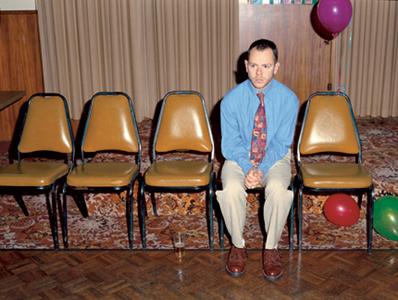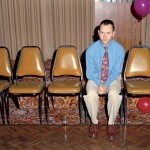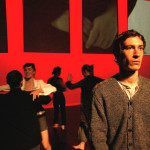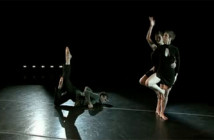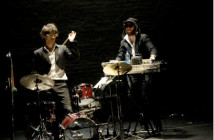CHUNKY MOVE @ THE ICA
In the question and answer session that followed the Australian-based dance troupe Chunky Move’s performance at the Institute of Contemporary Art (ICA), artistic director Gideon Obarzanek further charmed an admiring audience. He spoke about yoga, his background, and the artistic process behind his choreography. Obarzanek, a ruggedly good-looking man who appears young enough to still be a student at the Australian Ballet School, explained that he shies away from style. His goal, according to the company Web site, is “to redefine what is or what can be contemporary dance within an ever-evolving Australian culture.”
Chunky Move’s “I Want to Dance Better at Parties,” does indeed explore different kinds of dance from Latin ballroom to club grinding to Israeli folk dancing. However, the piece also stumbles over its own aspirations and watching sometimes feels like viewing a junior high dance from the sidelines: Sure, some of the kids might be talented, but they’ve got some growing up to do before they can move with adult discipline.
“I Want to Dance Better at Parties,” is based on a series of interviews Obarzanek conducted with men about their experiences with dance. Each of the five dancers on stage represents a particular man. The show opens with the dancers moving one by one beneath large hanging screens and performing the dance style of his or her character—except, of course, the club-going composer who is scared to dance; instead he just stands there awkwardly.
The opening movement transitions into the strongest character exploration of the whole performance. Dancer Antony Hamilton, wearing trousers, a t-shirt, and an oversized blazer, portrays a recently widowed father-of-two who wants to dance better at parties. As interview footage plays on the hanging screens, Hamilton sweetly acts out the father’s struggles to learn ballroom dancing. His animated expression as he gains greater confidence on the dance floor is endearing and mimics the real widower’s rising enthusiasm about what dance has meant to him in the wake of his wife’s death.
However, such moments of insight into the men’s characters are undone by the less structured parts of the piece. A sequence where Hamilton moves about the stage, breathing heavily and rising and falling to eerie electronic music, is less moving than it is melodramatic. In this series, as in others that follow, the purposefully heavy breathing is distracting and mimics Darth Vader breathing through his mask more than anxiety attacks. During a stretch meant to mimic the choreography’s process--one dancer seemingly controls the others with the flick of her arms. The movements are interesting and fresh, but lack the sharpness needed to make them mesmerizing.
Dancer Kristy Ayre is a joy to watch both when she plays a clogging, a rhythmic percussion style dancing characterized by tap-like footwork, and when she displays her athleticism in contemporary dance choreography. Lee Serle, is also memorable in his role as the composer who doesn’t want to dance and when he performs opposite Ayre manages to be both theatrical and disciplined.
“I Want to Dance Better at Parties” does not delve deeply enough to truly break down boundaries between genres or shed new light on dance as a public performance of masculinity. Nonetheless, like unrestrained dancers on a club floor, this company conveys an earnest love for dance in its multiple forms. With time, perhaps, they will mature into their own ambitions.
- promotional image for I Want to Dance Better at Parties.
- still from the performance, I Want to Dance Better at Parties, 2004.
- still from the performance, I Want to Dance Better at Parties, 2004.
The Institute of Contemporary Art
Chunky Move's website
All images are courtesy of the artists and the ICA.

